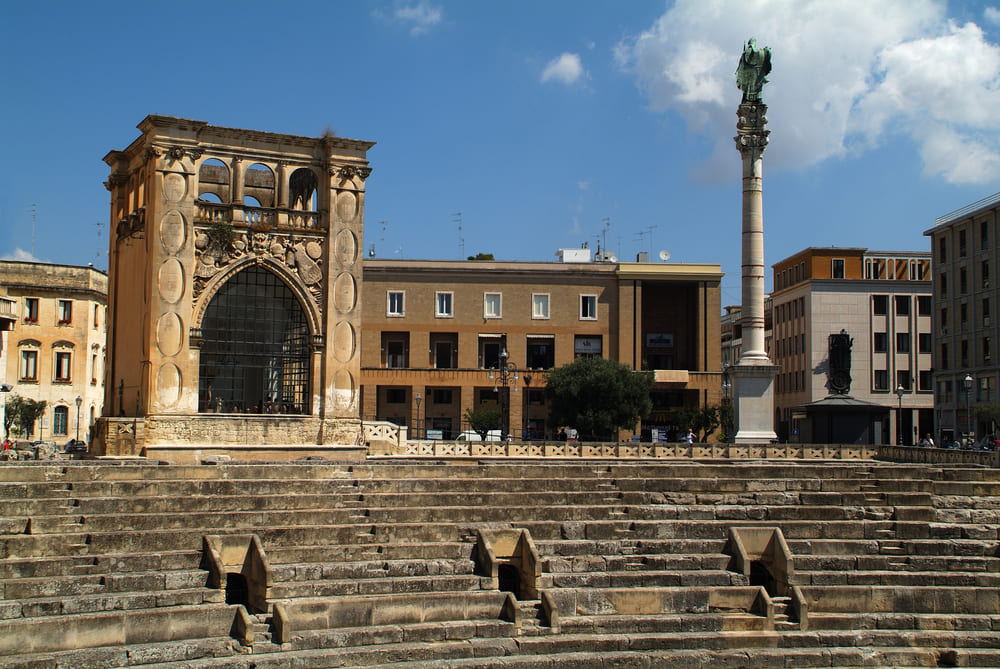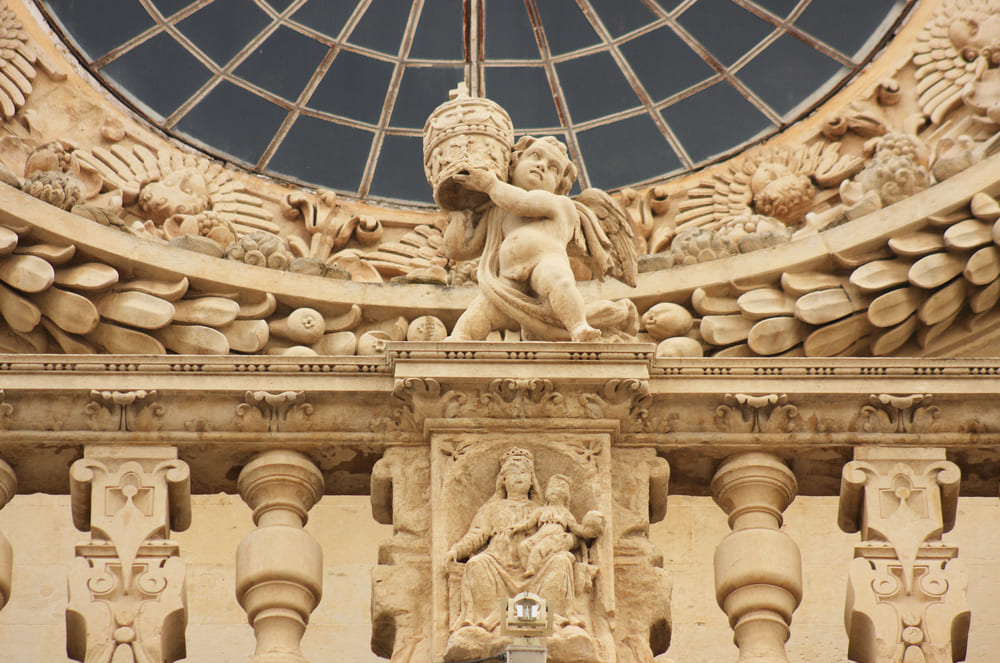Location Information
Lecce Tour
Visit Lecce
One of the most distinctive Puglian cities, Lecce has an amazing array of 18th century Baroque-style buildings that have earned its architecture the name “Barocco Leccese”, or Lecce Baroque. The buildings here feature decorative gremlins and gargoyles, which may not be everybody’s cup of tea, but they’re certainly unique.
Today, Lecce is a university town that is lively and graceful. Home to restaurants and boutiques, it’s within easy reach of both the Ionian and Adriatic seas and has a long history of papier-mache making.
The city’s main attractions include Piazza San Oronzo, the 17th-century Duomo (designed by G. Zimbalo), Porta Napoli (the original gate to the old town), the Obelisk (erected in the 19th century to honor Ferdinand I of the Two Sicilies), and the beautiful Paisiello Theatre.
You’ll step 2,000 years back in time at the ancient 2nd century Roman amphitheater right in the center of Lecce in Piazza St Oronzo. Your guide will also show you the best of the Baroque architecture such as the Basilica di Santa Croce.
The Baroque 17th-century Basilica Di Santa Croce (Holy Cross Church) and 15th-century Torre del Parco are popular sites in the city center, while the Orto Botanico di Lecce (University of Lecce botanical garden) is a peaceful nature sanctuary featuring hundreds of fruit trees and other plants.
Attractions For Lecce Tour
The Roman Amphitheatre
Built in the second century BC, the Roman amphitheater lay forgotten and buried for centuries after falling victim to earthquakes and bombardments. However, after the second world war, excavations began on the amphitheater and about two-thirds of its arena were finally uncovered. This has led archaeologists to calculate that the entire structure would once have measured 100 x 80 meters and would have held about 25,000 spectators.
Il Castello di Carlo V
The Spanish King and Holy Roman Emperor Charles V inherited large areas of Europe, and this part of Italy was just one of them. After ongoing Ottoman attacks, the King ordered a set of fortifications and towers to be constructed along Puglia’s coastline and Lecce’s castle was one of the resulting structures. Constructed in the 16th century, it was built on the existing site of a Norman fortress and while its ramparts may not be especially beautiful, its interiors are surprisingly attractive, with decorative halls and a central courtyard where artistic and cultural events are held today.
The Basilica di Santa Croce
Boasting one of Italy’s most intricate and fine Baroque facades, the Basilica di Santa Croce was perfected over no less than two centuries before finally being opened in 1695 for worship. Its unique adornments include dodos, cheep, beasts, and cherubs, all created by Giuseppe Zimbalo and its artistic team.
Include this location among many others in your very own tailor-made itinerary with Classic Puglia. Inquire with us for a free personalized quote.
Gallery








